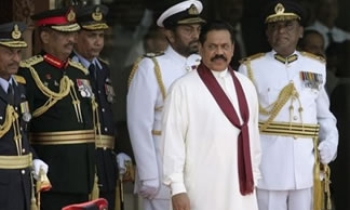MUMBAI: Hold your horses, everyone. The NRS (National Readership Survey) and IRS (Indian Readership Survey) are not coming together as a single survey or currency. Not for a long while, anyway-the hurdles are too many, so we can expect some more heated face-offs in the meanwhile as to who provides the most authentic readership data.
But should the two ultimately unite, most of the ad, media and publishing circles say they would welcome this single currency.
Marriage would cut costs
A united system would make for cost-efficiencies and remove contradictions.“The ad industry spends around Rs 5-6 crore on each sample survey. Around Rs12 crore is spent on the two surveys combined and there are a lot of duplication and complications. The industry could get away with spending just Rs.8 crore on one single survey, and a robust and credible one at that,” suggests Bharat Kapadia, who is director at Divya Bhaskar.
Says I. Venkat, director, Eenadu Group: “A single currency could resolve major issues relating to the publishing industry. Instead of the two merging, it makes more sense for the industry to pick and choose and go with the best survey. When TAM-INTAM merged, it gave rise to better data but also a monopoly.”
The chasm between the two sets of figures would be bridged. States N P Sathyamurthy of Carat Media: “It would wean away the ‘dissonance’ being created by publishers who use either NRS or IRS, whichever is suitable to them. Some media agencies also use selective data for negotiating with media owners.”
Second, research data users could benefit from a much larger sample size, especially in semi-urban towns and rural markets which are exhibiting true growth potential for many advertisers. This would also help users break up the large metros into smaller pockets and draw insights at micro-city levels. Also, an “amalgamated” research can aid in capturing information on emerging trends on media-specific areas as well as new product or services categories, lists Sathyamurthy.
For an advertiser angle, listen to Aloke Banerjee, CEO, S Kumars: “It is a little like tomatoes versus tomatoes for me. Each year, there an upswing-downswing in the numbers, and publishers make a hue and cry over it. Most advertisers resort to data from one source. It will benefit all, if there was a common survey.”
Good use for savings
Since most ad agencies use any one of the two surveys available, Ravi Kiran, CEO, Starcom, does not see too much change in the life of planners buyers either way. In fact, media owners might benefit more, as they will have a single point of reference, instead of getting caught between conflicting sets of data.
Nandini Dias, V-P, Lodestar Universal, says, “Over the years, due to pressure from some quarters almost all media houses have started buying both the databases. Despite the pressure, Lodestar has kept backing the principle that we must have a single currency and the research budgets should be used by the industry in a better way. For example, despite the explosion in FM radio no organised dynamic research is yet available.”
Dias says despite having two databases, most media houses follow just one. The other database is used only if the client has preferences.
Monies saved could allow for more investment in key areas, lists Amit Ray, vice-president Reliance Industries: “Develop an alternative for SEC, find new measurements beyond just CR or AIR for magazines, like engagement/involvement etc. Also, find out readership of the many complimentary pull-outs that come with the morning daily. Again, do a large-scale “reading & noting” (for TV, even the ad viewership is measured).”
Monopolies could be trouble too
A marriage of the two surveys could, however, have its pitfalls too, say industry men. Says Ravi Kiran: “It does make sense for a single healthy and robust currency, as the entire investment made by the industry can be used to improve the quality of data and innovate more. However, a single currency might itself not be the panacea for all the challenges. A single data provider, unless regulated and guided properly, can be truly monopolistic and stifle the innovative spirit.
Tapan Pal, CEO, aMap, also feels that competition brings out a better product. “Without two competing bodies, readership research would reach a level of saturation.”









